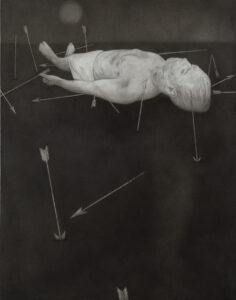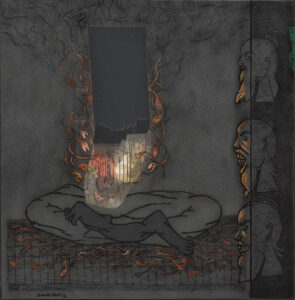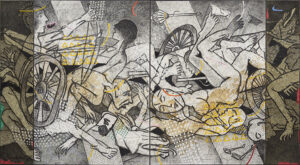Artists explore the epic Mahabharat in their own unique style through brush and paints
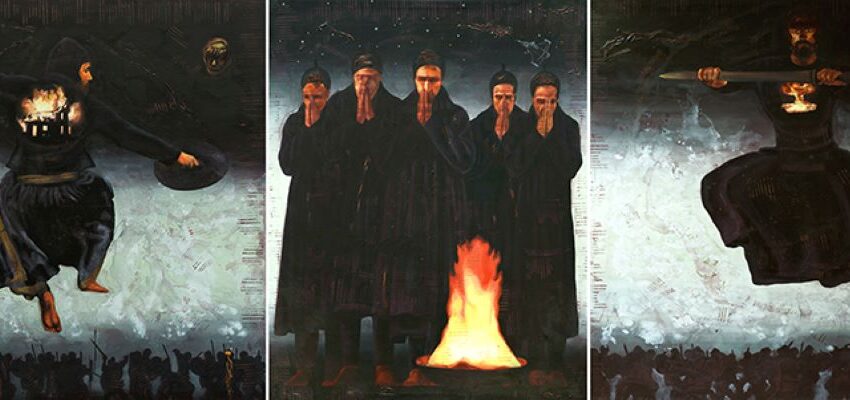
Pandavas by Aditya Basak
Team L&M
The Mahabharat has an undeniable relevance in today’s world. Each of the stories that happened back in Dwapar Yug talk about moral values, each of which helps us become a better human being. They tell us about what we should and shouldn’t do in our lives, thus teaching us the correct way of living life.
No wonder the epic has fascinated people of all ages, through all times. In fact, along with Ramayan, Mahabharat has been depicted extensively in Indian art. We see a stunning range of interpretations, from antiquity’s descriptive sculptures and gloriously detailed miniatures to more contemporary readings on these two epics.

A scene of Sitaharan (left) and Bhishma on bed of arrows by Chanda Bhattacharjee
One such depiction is Exploring The Epic Mahabharat, an exhibition of paintings on Mahabharat. It showcases the interpretation and depiction of the great Indian war by four different artists in their own unique style. But, these art works are not just simple depictions of events that happened, rather artists have indulged in free exploration of the epic’s contemporary orientation while keeping its classic soul in mind. While the works are definitely not intended to be illustrative, viewers may find all 18 episodes of the Mahabharat condensed in each work. The works highlight the natural human desire for justice in a world where the lines between good and evil are blurred.
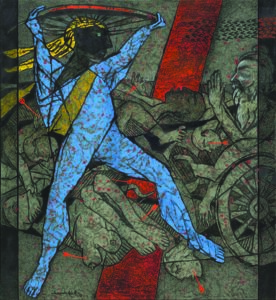
Krishna attacking Bhishma (left) and Janmejoy Sarpojoggaa by Samir Aich.
The show is curated by Jyotirmoy Bhattacharya, and participating artists are Aditya Basak, Chandra Bhattacharjee, Jaya Ganguly, and Samir Aich.
While Ganguly has based her paintings on her interpretation of epic events, Aich, in his works, has imagined himself as a ferocious warrior at Kurukshetra. Basak’s works show The Mahabharat as the world’s most heinous genocide while Chanda’s empathy lies with the epic heroes’ inevitable loneliness.
Samir Aich depiction of Kurukshetra, the war field.
Quoting the popular Bengali adage, Ja nei Mahabharatey, ta nei Bharatey (There’s nothing in Bharat that’s not there in The Mahabharat), Jyotirmoy says, “Dare I say that through this exhibition, Vyasa revisits his Mahabharat through the eyes of four outstanding artists in a post-millennial setting.”
The exhibition is on at Art Magnum, Yusuf Sarai, New Delhi, Delhi till December 10.


